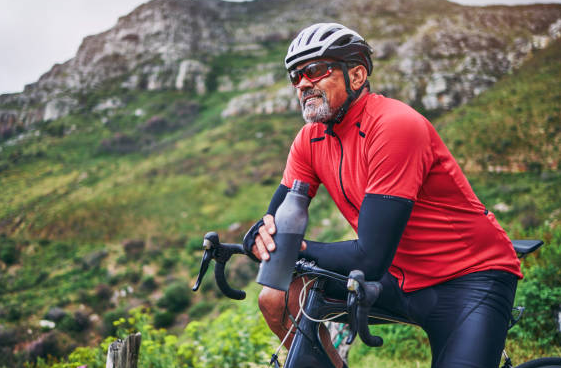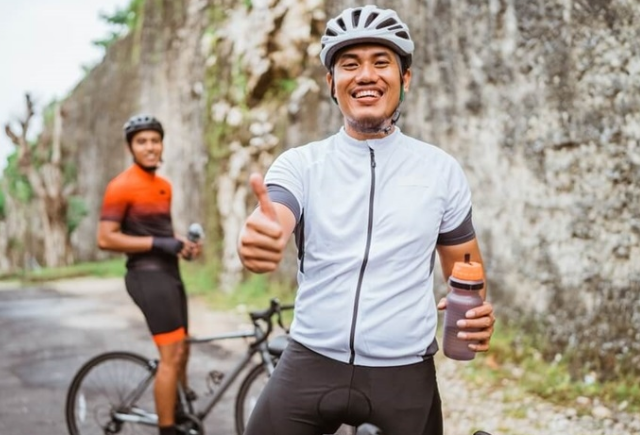Recovery in cycling training isn’t just a piece of advice, it’s an essential part of any effective training regimen. Recovery is often overlooked, and it’s more about more mileage or harder training, and it’s where recovery really pays off. It allows the body to repair, rebuild, and strengthen to prepare the cyclist for subsequent training. Drawing on a wealth of professional insights, this article explores a variety of recovery strategies that are suitable for both amateur and professional cyclists.
Riding Resumes the Basics
Definition and purpose of recovery in cycling
Recovery in cycling refers to the process and time of recovery from physical exertion. This critical period allows the body to adapt to the stress of exercise, replenish muscle glycogen, repair tissues, and avoid chronic fatigue. Without adequate recovery, the benefits of hard training are minimized, and the risk of overtraining and injury increases.

Difference Between Rest and Recovery
Rest and recovery, although often used interchangeably, are not the same. Rest usually involves stopping physical activity altogether to allow the body and mind to rest. Recovery, on the other hand, may include active techniques that enhance the body’s repair process, such as gentle cycling (recovery riding), stretching, or hydration strategies.
The Scientific Basis of Rehabilitation (Overcompensation Theory)
The concept of overcompensation explains the physiological changes that lead to improved athletic performance. After a workout, the body repairs damaged muscle fibers and its glycogen stores are depleted. With proper recovery, these reserves are not only replenished, but also increased, resulting in improved athletic performance. Therefore, the timing of recovery must be aligned with these physiological windows to maximize its benefits.
Components of Effective Recovery
Physical rest:
A complete rest day is essential for the body’s neuromuscular system to recover from the rigors of training. Recovery riding is another aspect of physical rest that includes low-intensity cycling that helps maintain blood circulation and mobility without putting intense stress on the body. These breaks should be arranged strategically during the training cycle to optimize recovery and performance.
Nourishment:
Post-ride nutrition is essential for the body’s recovery process to kick in. The timing and content of meals eaten after exercise can greatly affect the speed and efficiency of recovery. Foods rich in protein and carbohydrates help repair muscles and replenish energy stores, respectively. Keto supplements are also popular for their potential to enhance the recovery phase.
Hydration:
It’s crucial to drink electrolyte-rich beverages to stay hydrated, especially after a high-intensity or long ride. These restorative drinks help the body maintain optimal nerve function, muscle contraction, and fluid balance. Group riding can further emphasize the need for proper hydration strategies to maintain energy and performance throughout the activity.
Recovery Techniques
Proactive recovery:
Combined with active recovery, such as light, low-intensity cycling or gentle exercise, it helps reduce stiffness and promote blood circulation to muscle tissue, speeding up the healing process.
Go to bed:
Quality sleep is essential for recovery because during deep sleep, the body undergoes most of the repair and growth process due to the natural release of growth hormone.
Muscle care:
Regular massage, foam roller massage, and stretching can significantly improve recovery, increase flexibility, and reduce muscle tension. Compression garments also help to improve blood circulation and shorten recovery time.
Mental and Emotional Rehabilitation
Mental rest and stress management are just as important as physical recovery. Techniques such as mindfulness and relaxation exercises can help clear the mind, reduce stress, and improve overall recovery.

Recovery Techniques and Tools
In competitive and recreational cycling, the role of technology and professional tools in promoting recovery has increased significantly. These innovations include gadgets for monitoring physiological indicators as well as devices specifically designed for the body’s recovery. These technical tools can also optimize the mastery of the riding rhythm, which can improve athletic performance and recovery.
Restore the use of gadgets and applications
One of the most valuable tools for cyclists is a heart rate variability (HRV) monitor. HRV monitoring devices help cyclists judge their recovery status by measuring the time changes between heartbeats, which can indicate balance and stress levels in the autonomic nervous system. Apps that interpret HRV data can guide athletes to adjust training intensity and recovery based on body signals.
Other digital tools include sleep tracking devices and fitness watches that monitor sleep quality, rest, and physical readiness, allowing athletes to optimize sleep and recovery.
Top recovery product reviews
Body recovery tools are also becoming increasingly popular and sophisticated. Recovery boots are widely used by professional cyclists because they use pneumatic compression to promote blood circulation and speed up the removal of waste products from muscle metabolism. These boots simulate a deep massage to reduce muscle soreness and shorten recovery time.
Massage tools, including electric massagers and percussion therapy devices, provide targeted relief and can be used daily to maintain muscle elasticity and reduce tension. Foam rollers and specialized stretching aids also play a vital role in a cyclist’s recovery kit, helping to keep muscles and tendons healthy.
Personalize Your Recovery Plan
Customize your recovery strategy
Every rider’s body reacts differently to training load, so a personalized recovery plan is essential. Factors such as age, training intensity, fitness level, and personal health can all affect the most effective method of recovery. For example, older cyclists or those who train heavily may need a longer recovery period and may benefit more from passive recovery techniques such as massage or compression therapy.
The importance of listening to your body’s voice
The foundation of an effective recovery program is the ability to listen to and respond to the body’s signals. Ignoring signs of fatigue and discomfort can lead to overtraining and injury. Cyclists need to intuitively understand how their bodies respond to different recovery tools and techniques, and adjust recovery strategies as needed to suit their physical and mental state.

